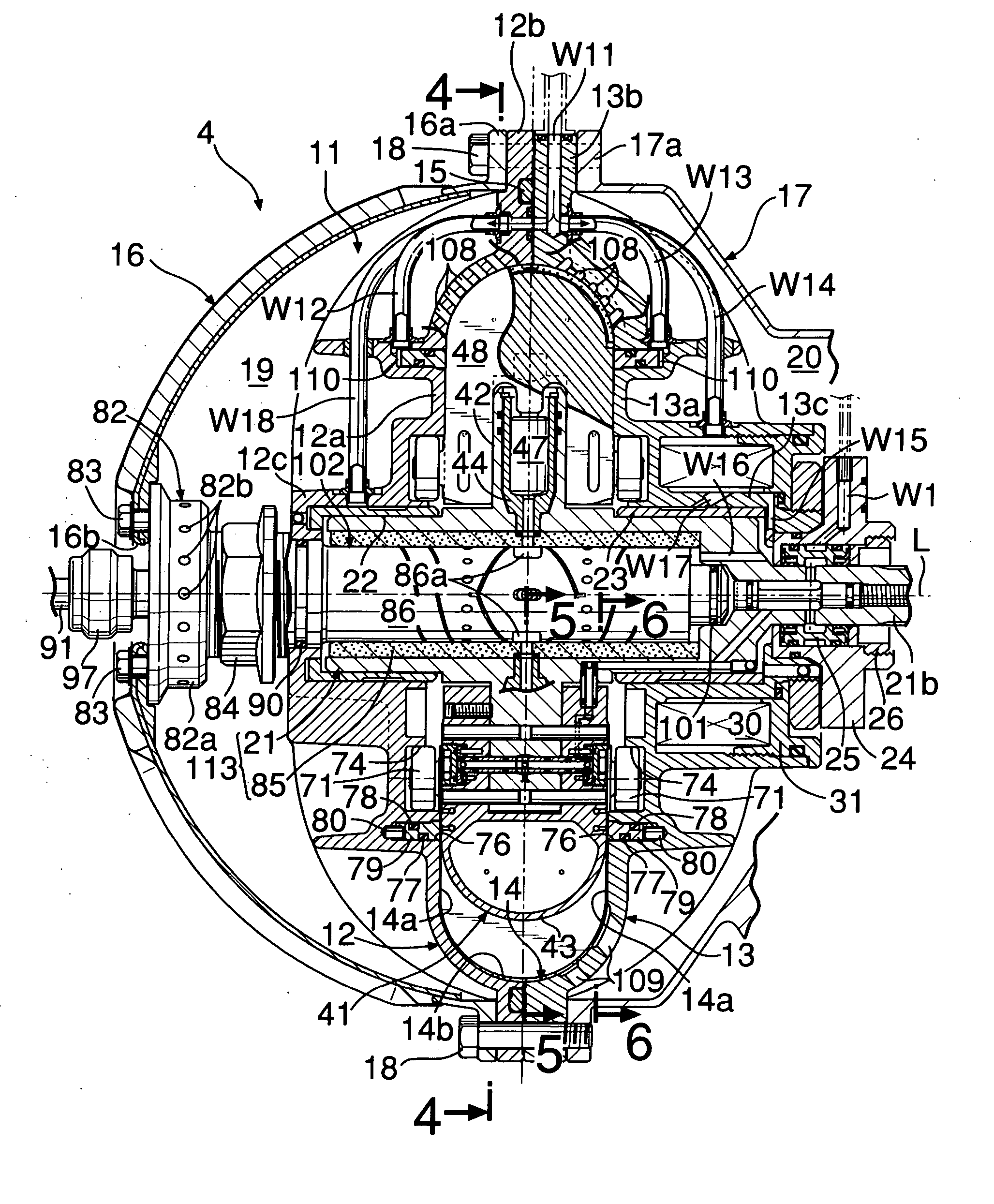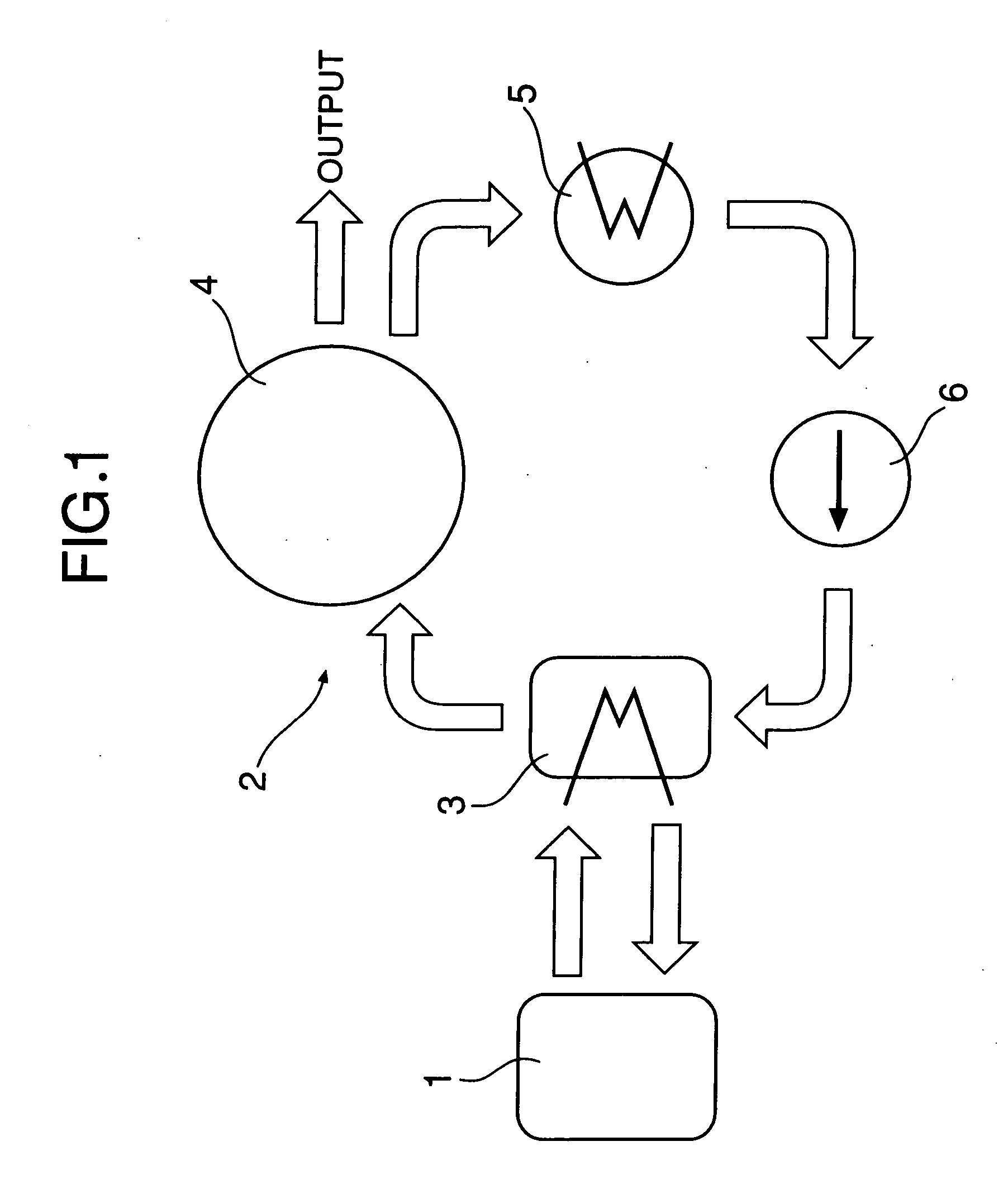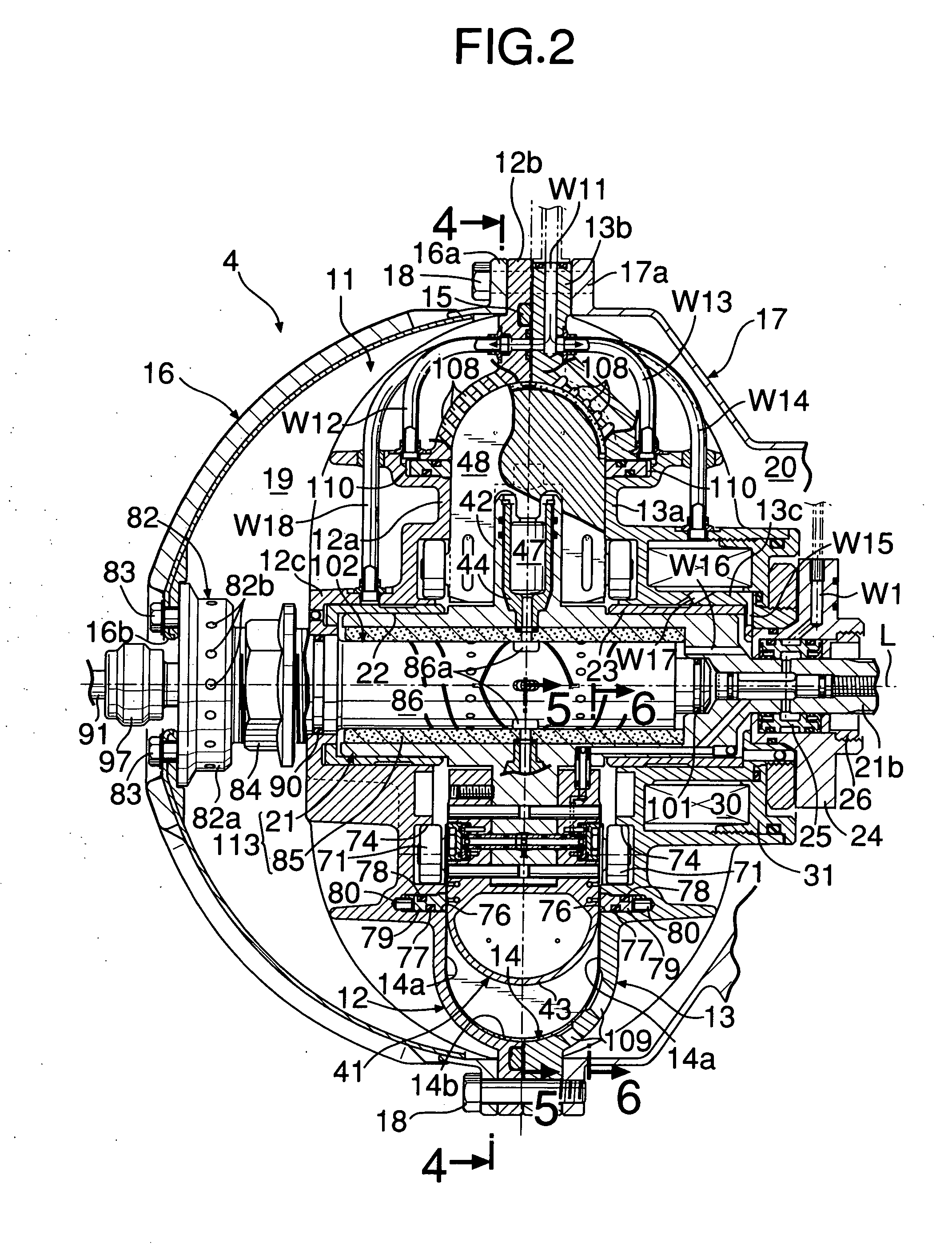Rotary fluid machine
- Summary
- Abstract
- Description
- Claims
- Application Information
AI Technical Summary
Benefits of technology
Problems solved by technology
Method used
Image
Examples
first embodiment
[0012] the present invention is explained below with reference to FIG. 1 to FIG. 21D.
[0013] In FIG. 1, a waste heat recovery system 2 for an internal combustion engine 1 includes an evaporator 3 that generates high temperature, high pressure steam by vaporizing a high pressure liquid (e.g. water) using as a heat source the waste heat (e.g. exhaust gas) of the internal combustion engine 1, an expander 4 that generates an output by expansion of the steam, a condenser 5 that liquefies steam having decreased temperature and pressure as a result of conversion of the pressure energy into mechanical energy in the expander 4, and a supply pump 6 that pressurizes the liquid (e.g. water) from the condenser 5 and resupplies it to the evaporator 3.
[0014] As shown in FIG. 2 and FIG. 3, a casing 11 of the expander 4 is formed from first and second casing halves 12 and 13, which are made of metal. The first and second casing halves 12 and 13 are formed from main body portions 12a and 13a, which i...
second embodiment
[0082] In the second embodiment, a second fixed shaft 93 extends leftward so as to cover the outer periphery of a steam supply pipe 91, and the left-hand end of the second fixed shaft 93 is fitted in and fixed to a boss portion 81a of a spring support member 81. A plurality (eight in this embodiment) of slits 93b extending in the axis L direction are formed in the second fixed shaft 93 adjacent to the boss portion 81a of the spring support member 81, and the section where these slits 93b are formed functions as a fixed shaft support spring 95. The fixed shaft support spring 95 can easily be elastically deformed in the radial direction by virtue of the slits 93b and, moreover, it can withstand a load in the axis L direction without being deformed.
[0083] In order to prevent steam that has leaked from the section where the right-hand end of the steam supply pipe 91 and the left-hand end of the first fixed shaft 92 are fitted together from passing through the slits 93b of the fixed shaf...
PUM
 Login to View More
Login to View More Abstract
Description
Claims
Application Information
 Login to View More
Login to View More - R&D
- Intellectual Property
- Life Sciences
- Materials
- Tech Scout
- Unparalleled Data Quality
- Higher Quality Content
- 60% Fewer Hallucinations
Browse by: Latest US Patents, China's latest patents, Technical Efficacy Thesaurus, Application Domain, Technology Topic, Popular Technical Reports.
© 2025 PatSnap. All rights reserved.Legal|Privacy policy|Modern Slavery Act Transparency Statement|Sitemap|About US| Contact US: help@patsnap.com



